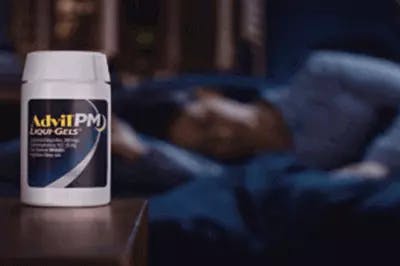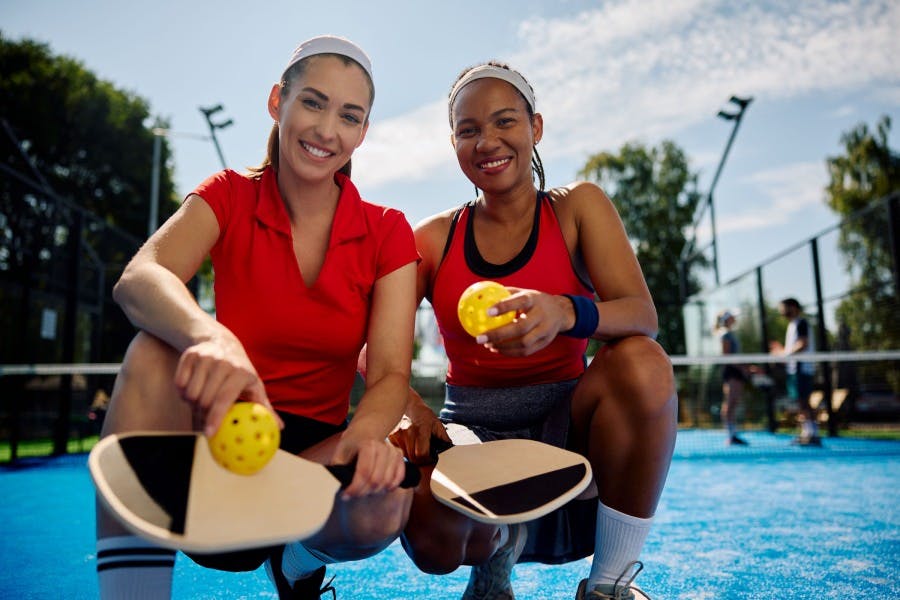Pain Relief Before, During, and After Your Pickleball Game
No matter what your fitness goals are, if you’re feeling pain while you’re being active, you won’t be as motivated to continue. Lifelong exercise and fun cardiovascular activities like pickleball are vital to a healthy and longer lifespan, capable of reducing the onset of 40 chronic conditions or diseases.1
If you’re embarking on a new fitness routine or looking to shake things up in your existing routine, it’s important to find pain relief before, during and after you exercise. Whether you’re lifting weights, doing cardio-intensive activities, or getting into new sports, see how you can reduce pain by stretching, adjusting your routine, and using post-recovery pain relief.
The Importance of Pre-Workout Stretches
Stretching before your workout or your session on the court is crucial to getting the most results from your exercises. Research has shown that stretching can help improve flexibility, and the range of motion of your joints.2 Improved flexibility thanks to stretching has also been proven to: 2
- Decrease your risk of injuries
- Help your joints move through their full range of motion
- Increase muscle blood flow
- Enable your muscles to work most effectively
By warming up your muscles, focusing on major muscle groups, and keeping your stretches specific to your activity or sport, you can get the most out of the time you spend stretching—usually 2-3 times per week.2
There are many ways to stretch. Active stretching uses your own muscles to provide resistance, using one muscle to move or contract another.3 Dynamic stretching mimics the exact activity that you’re about to do, focusing on specific muscle groups.4 For example, you’ll want to stretch your hamstrings before using back-and-forth leg motions for sports like soccer, tennis, or pickleball, which will help you you avoid straining the muscles that you use most.2
Finally, static stretching involves holding a joint as far as it will go and holding it in place for 30 to 90 seconds.4 Experts recommend static stretching as a cooldown, as opposed to active and dynamic stretching.4
How to Prevent Pain While Playing
When you start a new activity or routine, it’s normal to feel pain, stiffness, and/or swelling—especially when starting a popular new sport like pickleball.5 This is known as delayed onset muscle soreness (DOMS).6 It may take up to two months for your muscles to settle down, but this long-term pain will usually subside.5 If you’re feeling drastic pain while you exercise, here are some things you can do to adjust your routine:5
- Play or exercise less frequently (fewer days per week).
- Exercise for shorter periods of time (less time each session).
- Exercise with less intensity (elliptical instead of running, for example).
- Spend more time stretching with low-impact movements.
- Reduce the weight or resistance that you’re using and build your strength gradually.
- Join a league that better matches your skill set and beginner levels.
- Consider taking classes so you can get expert advice from trainers.
Treating Sore Muscles After Your Game
If you’ve injured yourself, you’ll notice right away. You will usually notice pain, tenderness, swelling, bruising, or stiffness.6 When you’re serving on the pickleball court, the repetitive motions can cause shoulder, wrist, and elbow pain—so try applying ice packs to the sore area or massage the area yourself.6 A post-workout stretch can also do wonders, especially when your muscles are still warm.2
Usually, this pain will go away as you continue getting exercise. However, consult your doctor if you still feel the following after 5 or more days:6
- Pain that is sharp, stabbing, and constant.
- Pain that causes you to limp.
- Pain that lasts more than 2 hours after exercise or gets worse at night.
- Pain or swelling that does not get better with rest, medication, or hot or cold packs.
- Large increases in swelling or your joints feel “hot” or are red.5
Lastly, try Advil Targeted Relief for the best pain reliever for sore muscles after your session. The first topical pain reliever from Advil, it contains a unique combination of 4 powerful pain-fighting ingredients that are designed to quickly absorb‚ penetrate and rush relief to the source of pain. Advil Targeted Relief starts working on contact and provides up to 8 hours of powerful relief at the source, so you can walk off the pickleball court with confidence.
SOURCES
1. Health Benefits of Exercise. National Library of Medicine. https://www.ncbi.nlm.nih.gov/pmc/articles/PMC6027933/. Accessed 3/29/24.
2. Stretching: Focus on flexibility. Mayo Clinic. https://www.mayoclinic.org/healthy-lifestyle/fitness/in-depth/stretching/art-20047931?p=1/. Accessed 3/29/24.
3. Active stretching. Cleveland Clinic. https://health.clevelandclinic.org/active-stretching/. Accessed 3/29/24.
4. Understanding the Difference Between Dynamic and Static Stretching. Cleveland Clinic. https://health.clevelandclinic.org/understanding-the-difference-between-dynamic-and-static-stretching/. Accessed 3/29/24.
5. What Do I Do if I Have Pain During or After Exercise? Centers for Disease Control. https://www.cdc.gov/arthritis/basics/physical-activity/pain.html/ . Accessed 3/29/24.
6. Pain and injuries after exercise. NHS Inform. https://www.nhsinform.scot/healthy-living/keeping-active/before-and-after-exercise/pain-and-injuries-after-exercise/. Accessed 3/29/24.
By clicking the link(s) above, you will be taken to an external website that is independently operated and not managed by Haleon. Haleon assumes no responsibility for the content on the website. If you do not wish to leave this website, do not click on the links above.



